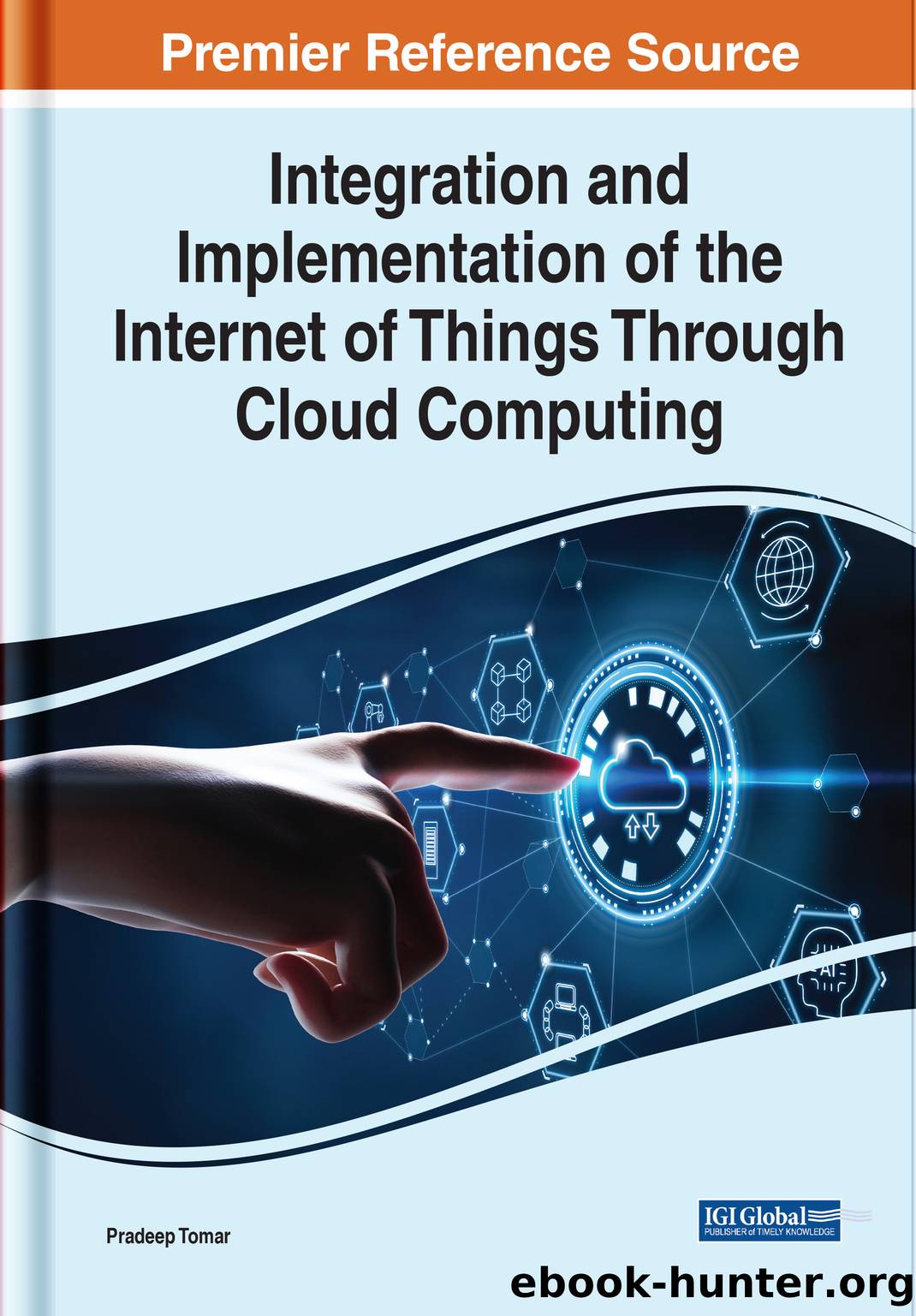Integration and Implementation of the Internet of Things Through Cloud Computing by Tomar Pradeep

Author:Tomar Pradeep
Language: eng
Format: epub
Publisher: Engineering Science Reference
Wireless sensor-based technology is used in proposed solutions. The sensors are connected to the control panel via Wi-Fi connectivity. They are distributed and connected to control panels in various zones. Each zone means one device dedicatedly connected to one individual Input-Output port of the control panel. This control panel can maximum accommodate eight various sensors. Technical details are explained in the next section. The proposed solution is divided into six process flows.
Process Flow #1: Communication From Site Engineer to Network Operations Center (NOC)
The site engineer will reach the site. From there he will call NOC. A network operations center (NOC) is a centralized location used by network administrators to manage, control and monitor multiple telecom networks simultaneously. To optimize network operations across a variety of platforms, mediums and communications channels is the main function and purpose of NOC. Site engineer will be asked to provide details like his name, company name, mobile number, Aadhar number and purpose of visit. The purpose of seeking all these details is to authenticate the site engineer.
Process Flow #2: Communication From NOC to Site Engineer
Once the NOC authenticates the site engineer, the system will generate two One Time Passwords (OTP). These OTPs are received simultaneously by the site panel and site engineerâs authenticated mobile phone.
Process Flow #3: Site Engineer Inside the Site
Site engineers will use the first OTP to open the door using the electronic keyboard fitted on the telecom siteâs entry door. Once the door is open, he will use a second OTP to disarm the intrusion control panel. In 3 minutes, the person has to disarm the intrusion panel using a second OTP otherwise the entrant will be treated as unauthorized visitor. The panel is disarmed so that no alarms, hooters and alerts are generated and the person can finish his task. Depending upon the type of work, a time limit is set, during which the panel will remain disarmed.
Process Flow #4: Sensors Activation
Once OTP is entered and authenticated by the control panel, the hydraulic lock is triggered. Main access door is open. As the person steps inside, the motion sensor-based camera senses the motion and gets triggered. It captures the snapshots and sends on the File Transfer Protocol (FTP) server hosted on cloud. Door sensor sends the status to the NOC. Motion sensor senses the motion and updates the status on the server. This will not generate any alarms as this is a case of authenticated entry.
Process Flow #5: After Completion of Task
When the site engineer finishes the task, he has to arm the intrusion panel by pressing a number through the keyboard of the intrusion panel. If he forgets to arm the intrusion panel and leaves the site then door sensor will trigger the intrusion panel. The intrusion panel will be armed again within 3 minutes.
Process Flow #6: Case of Forced Entry
In case of unauthenticated and forced entry inside the telecom site, the motion sensor will trigger the intrusion panel. Hooter system will be triggered by the intrusion panel. Motion sensors will trigger the camera & pictures will be captured.
Download
This site does not store any files on its server. We only index and link to content provided by other sites. Please contact the content providers to delete copyright contents if any and email us, we'll remove relevant links or contents immediately.
Exploring Deepfakes by Bryan Lyon and Matt Tora(8283)
Robo-Advisor with Python by Aki Ranin(8234)
Offensive Shellcode from Scratch by Rishalin Pillay(6384)
Microsoft 365 and SharePoint Online Cookbook by Gaurav Mahajan Sudeep Ghatak Nate Chamberlain Scott Brewster(5609)
Ego Is the Enemy by Ryan Holiday(5294)
Management Strategies for the Cloud Revolution: How Cloud Computing Is Transforming Business and Why You Can't Afford to Be Left Behind by Charles Babcock(4525)
Python for ArcGIS Pro by Silas Toms Bill Parker(4456)
Elevating React Web Development with Gatsby by Samuel Larsen-Disney(4177)
Machine Learning at Scale with H2O by Gregory Keys | David Whiting(4176)
Liar's Poker by Michael Lewis(3368)
Learning C# by Developing Games with Unity 2021 by Harrison Ferrone(3333)
Speed Up Your Python with Rust by Maxwell Flitton(3277)
OPNsense Beginner to Professional by Julio Cesar Bueno de Camargo(3250)
Extreme DAX by Michiel Rozema & Henk Vlootman(3235)
Agile Security Operations by Hinne Hettema(3160)
Linux Command Line and Shell Scripting Techniques by Vedran Dakic and Jasmin Redzepagic(3151)
Essential Cryptography for JavaScript Developers by Alessandro Segala(3122)
Cryptography Algorithms by Massimo Bertaccini(3057)
AI-Powered Commerce by Andy Pandharikar & Frederik Bussler(3021)
